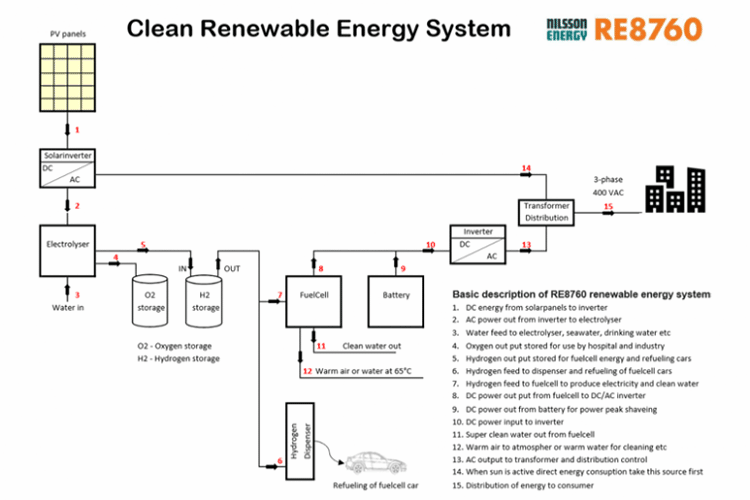February 25, 2023

In Gothenburg, Sweden, retired engineer Hans Nilsson lives in his self-designed house powered entirely by solar and hydrogen energy.
This fully autonomous house, providing electricity throughout the year by employing solar panels and hydrogen fuel cell technology, has become a source of inspiration for environmentalists and designers throughout the country.
The layout is composed of 160 m² of solar panels and a hydrogen electrolyser allowing him to convert surplus PV electricity into hydrogen, which can then be transformed into electricity via fuel cells. In fact fuel cells are more efficient than conventional solar storage batteries, enabling more sustainable energy storage.
In addition to being 100% energy self-sufficient, the house also includes technology capable of automatically calibrating the ambient indoor temperature, ensuring year-round comfort.
This unique home has been using its innovative power system since 2015. And so impressed was the local government by the proven design, in 2017 the mayor of the Vågårda municipality had a similar system installed in a hundred social housing units. And of course the installation was overseen by the designer Nilsson himself.

However, this design concept is not for everyone. The big house of 500 m² floor surface is covered with solar panels over 160 m² (140 m² on the roof with 20 m² for hot water production). The installation produces 22,000 kW/h per year – around 5-6 times the typical UK domestic requirement. And it doesn’t resell any electricity to the national grid, instead reinjecting surplus energy back into the system to generate more hydrogen.
No details of the cost of the project have been made available, although doubtlessly high when considering the PV panels alone, not to mention the cost of the electrolyser and control system. Nevertheless the technology has been proven to work – in a country renowned for its harsh, dark winters – and with the cost of PV panels continuing to fall, together with that of electrolysers, this is a design concept that might well stand the test of time.
Photo credits: Hans Nilsson and Nilsson Energy AB
Eva Corell, Head of Communications
Nilsson Energy AB
Lindholmspiren 7,
417 56 Göteborg, Sweden
tel: +46 (0) 70 433 14 32
web: nilssonenergy.com
Tony Wood, Editor
BXD
in: tonywoodbxd
mail: newsdesk@bxdsystems.com
web: bxdsystems.com
